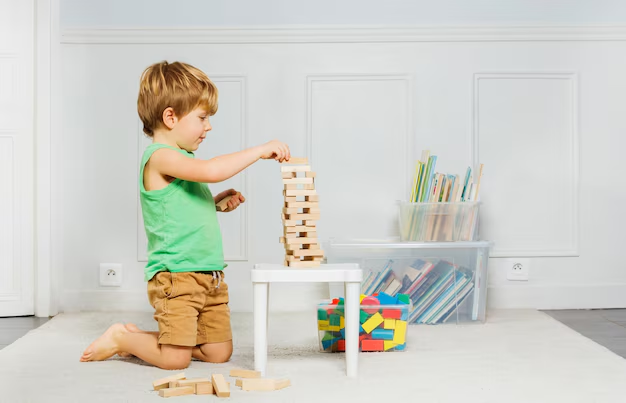Crafting a Cool Refrigerator in Minecraft: Your Ultimate Guide
Imagine stepping into your Minecraft kitchen and finding a refrigerator standing tall, its polished surface glistening as you reach in to grab a tasty snack. Whether you're a seasoned builder or a budding Minecraft architect, adding a refrigerator to your virtual abode can enhance both its aesthetic charm and functional appeal. In this guide, we'll uncover how to craft a refrigerator in Minecraft, providing a step-by-step journey along with creative tips to personalize your kitchen-centric projects.
Why Build a Refrigerator in Minecraft?
Enhancing Your In-Game Aesthetic
In Minecraft, creativity is your only limit. A refrigerator is not just a utility—it is a statement piece in your kitchen. It adds realism and a modern touch to your builds, transforming mundane in-game spaces into cozy, inviting environments.
Organizing Your Resources
While you can't actually cool food items in Minecraft, building a refrigerator can act as a crafty method for storing food resources and supplies. This organization can streamline gameplay, making it easier to role-play or manage survival elements efficiently.
Essentials for Building a Minecraft Refrigerator
Before delving into the construction process, let's explore the basic materials you'll need. Here's a simple checklist:
- Iron Blocks: The main material to give your refrigerator its sleek, metallic exterior.
- Quartz Blocks: For a marbled or less metallic finish, depending on your design preference.
- Buttons: For handles. This can be either stone or wooden, depending on the color contrast you prefer.
- Iron Doors: Acts as the refrigerator door to create a convincing look.
- Trapdoors: These may be used internally for shelves or externally for decorative touches.
- Redstone Components: If you plan to add a functional door or cool light effects.
Step-by-Step: Crafting Your Refrigerator
Step 1: Selecting the Spot
Choose a location in your Minecraft kitchen where the refrigerator will be both accessible and visually cohesive with surrounding elements. Ideally, it should be against a wall, providing a foundation from which you can expand.
Step 2: Construct the Base
Lay down Iron or Quartz blocks to form the refrigerator body. These blocks act as the skeleton of your build, usually around 2-4 blocks high, based on the refrigerator size you want.
Place the Iron Door at the front of the structure. This choice gives the appearance of a single-door refrigerator and elegance in its finish.
Step 3: Adding the Details
Attach a Button to the iron door, simulating a handle. Consider the material: a stone button offers a minimalistic look, while a wooden button can convey a more rustic charm.
Consider using Trapdoors above the main structure to resemble the freezer door. This adds layers and depth, making your refrigerator more dynamic.
Step 4: Interior Refinement
For those who want functional storage:
Inside, allocate space for chests or barrels. This approach allows for storage of food items and other essentials, simulating the real-world function of a refrigerator.
Use Trapdoors or signs as makeshift shelves within the interior casing, providing organized storage options.
Step 5: Redstone Enhancements (Optional)
If you're adept with redstone, you can incorporate:
- Redstone lamps and switches to add interior lighting, mimicking refrigerator lights when doors open.
- Pressure Plates or Redstone Torches to create an automatic opening feature when approached, giving an interactive element.
Personalization Ideas
Color and Material Variations
Diorite, Concrete, or Terracotta Blocks can offer alternative aesthetics to standard iron or quartz, providing color and texture variety that suits different build themes or palettes.
Built-in Features
Consider making a fridge that integrates other kitchen elements:
- Water and Ice Dispenser: Though purely aesthetic, two buttons and a strategically placed glass block or water source can simulate this feature.
- Overhead Cabinets: Extend upward or sideways with additional blocks for an encompassing kitchen unit look.
Common Pitfalls and How to Avoid Them
Proper Scale
Ensure that the size of your refrigerator matches the proportions of your kitchen space. A refrigerator that's disproportionately large or small can disturb the flow of the room and overall realism.
Redstone Complexity
Overcomplicating with redstone can lead to functionality issues or lag. Keep redstone systems minimal unless necessary, opting for simpler mechanisms unless you're confident in your redstone expertise.
Summary of Key Takeaways
Here’s a quick bullet-point summary to keep you on track 📝:
- 🧱 Materials Needed: Iron/Quartz Blocks, Iron Doors, Buttons, Trapdoors, Redstone (Optional)
- 🎨 Design Tip: Match fridge materials to your kitchen's theme for a cohesive look.
- 🔧 Building Process: Structure (iron/quartz), Door (iron), Decorations (buttons/trapdoors), Storage (chests/shelves).
- 💡 Enhancement Add-ons: Lighting, Auto-open features via redstone, Interior shelves.
- ⚠️ Avoid Pitfalls: Align refrigerator size to room design; simplify redstone components for better performance.
Crafting a refrigerator in Minecraft is more than just piecing together blocks; it's about bringing your creative vision to life, offering functionality and flair to your Minecraft home. Whether choosing simple or elaborate designs, this guide is your launchpad to mastering the art of creating impressive kitchen setups. Now, with your newfound knowledge, dive into Minecraft, and start crafting your culinary masterpiece! 🍽️🏡
